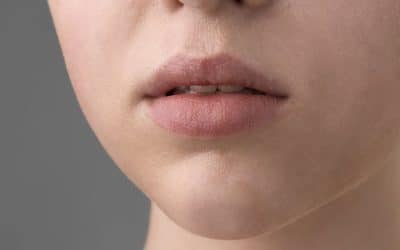Liposuction is a popular cosmetic surgery procedure designed to remove excess fat from targeted areas of the body. Many people seek liposuction to enhance their body contours and improve their overall appearance. However, before committing to the procedure, it’s important to have a clear understanding of what liposuction involves.
Here, we address some of the most frequently asked questions about liposuction, from the procedure itself to the recovery process.
What is Liposuction?
Liposuction, also known as lipoplasty or fat removal surgery, is a cosmetic procedure that removes excess fat from specific areas of the body using suction. It is typically used to target areas like the abdomen, thighs, hips, arms, neck, and chin. The procedure can be an effective way to sculpt the body and achieve a more contoured, slimmer appearance.
Who is a Good Candidate for Liposuction?
The best candidates for liposuction are individuals who are in good overall health, maintain a stable weight, and have realistic expectations about the results. While liposuction can be effective in removing stubborn fat deposits that do not respond to diet and exercise, it is not a weight-loss solution or a substitute for a healthy lifestyle.
Liposuction is most effective for individuals with firm, elastic skin who have areas of fat that are resistant to traditional weight loss methods. It is important to remember that liposuction is not a solution for conditions like obesity or significant weight loss.
How is Liposuction Performed?
Liposuction is typically performed under local anaesthesia, although general anaesthesia may be used in certain cases, especially if a large volume of fat is being removed. The procedure involves making small incisions in the targeted area, through which a thin tube (called a cannula) is inserted. The cannula is used to loosen and suction out the fat.
There are several different types of liposuction techniques, including:
- Tumescent Liposuction: Involves injecting a saline solution into the target area to make the fat easier to remove and reduce bleeding.
- Ultrasound-Assisted Liposuction (UAL): Uses ultrasonic waves to liquefy the fat before it is suctioned out.
- Laser-Assisted Liposuction (LAL): Uses laser energy to break down fat cells, making them easier to remove.
- Power-Assisted Liposuction (PAL): Uses a motorized cannula that moves in a back-and-forth motion to make fat removal faster and easier.
What Areas Can Liposuction Target?
Liposuction can be used to remove fat from various areas of the body, including:
- Abdomen: Ideal for those struggling with a protruding belly or stubborn fat around the waist.
- Thighs: Fat on the inner and outer thighs can be difficult to shift with exercise, making liposuction a popular option.
- Hips: Many people choose liposuction to reduce excess fat around the hips and flanks (love handles).
- Arms: Liposuction can help reduce sagging or fatty arms, improving their tone and definition.
- Neck and Chin: Double chin fat can be removed through liposuction to create a more defined jawline.
- Back and Bra Area: Liposuction can target fat in the back and the areas under the bra strap, providing a smoother, more sculpted look.
What is the Recovery Process Like?
After liposuction, patients can expect some swelling, bruising, and discomfort. These side effects usually subside within a few days to weeks. Depending on the extent of the procedure, most people are able to return to their normal activities within one to two weeks. However, strenuous exercise and activities should be avoided for about six weeks to ensure optimal healing.
A compression garment is typically worn for several weeks after the procedure to help reduce swelling and support the healing process. Full results from liposuction may not be apparent for several months, as the body gradually adjusts and the final contours settle.
Are There Any Risks or Complications?
Like any surgical procedure, liposuction carries some risks, although complications are rare. Possible risks include:
- Infection: As with any surgery, there is a risk of infection at the incision sites.
- Scarring: While the incisions are small, there may be some scarring, which typically fades over time.
- Blood Clots: In rare cases, blood clots can form, leading to complications.
- Irregular Contours: Uneven fat removal or skin retraction can lead to an uneven appearance, though this is uncommon.
- Numbness: Temporary or permanent numbness in the treated areas is a possible side effect.
It’s important to discuss these risks with your surgeon during a consultation to ensure you fully understand the procedure and what to expect.
How Long Do Liposuction Results Last?
Liposuction provides long-lasting results as long as the individual maintains a healthy diet and regular exercise routine. While the fat cells removed during liposuction do not grow back, new fat can still accumulate if you gain weight in the future. Therefore, it’s essential to adopt a healthy lifestyle to maintain the sculpted look achieved through liposuction.
How Much Does Liposuction Cost?
The cost of liposuction can vary depending on factors such as the size of the area being treated, the technique used, and the surgeon’s experience. In the UK, the cost typically ranges from £4850 to £8200 or more. It’s important to discuss the cost upfront with your surgeon and consider all potential fees, including consultation, anaesthesia, and follow-up visits.
Conclusion
Liposuction is an effective way to target stubborn fat and improve body contours, helping you achieve the look you’ve always wanted. However, it’s important to have realistic expectations and fully understand the procedure, including potential risks and the recovery process.
If you’re considering liposuction, contact us today for a free consultation. Our experienced team is here to answer all your questions, guide you through the process, and help you make an informed decision about your body. Let us help you take the next step toward feeling confident and looking your best.
Contact us now to schedule your free liposuction consultation!


